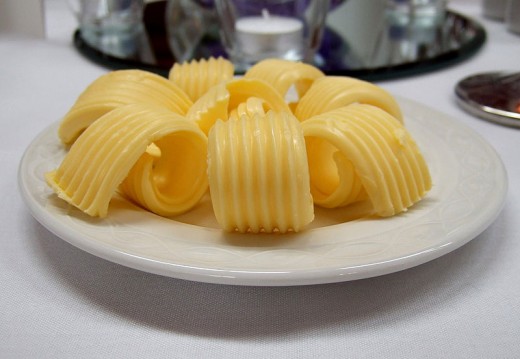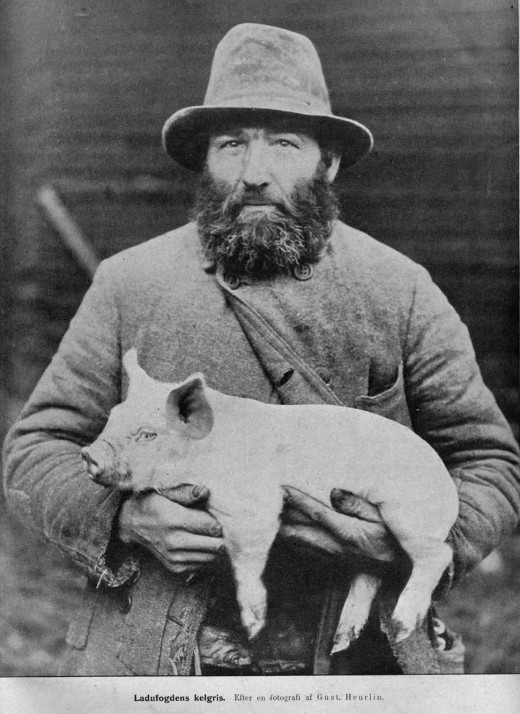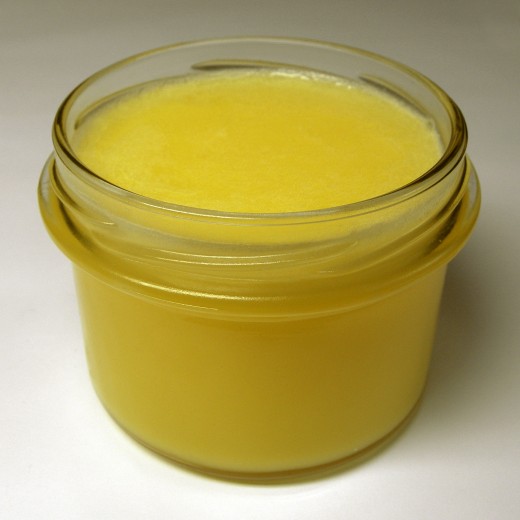Larry's Butter Testing Experiment




A pig in a poke
During the Middle Ages, unscrupulous merchants sold putative 'baby pigs' to their unsuspecting customers. When the customer got home, he would open the sack, and find that the merchant had substituted a cat, which was considerably less valuable as a food item than the baby pig. This trick became known as "a pig in a poke."
In modern times, the metaphor has been extended to include any unknown quantity, about which we must make a decision. In the US, a typical Supreme Court nominee could be described as a pig in a poke. Their past academic writings and judicial decisions do not cover the entire spectrum of cases that are likely to come before them as a sitting Supreme. Moreover it would be unprofessional and impolitic for a nominee to telegraph their opinions about possible future cases involving the death penalty, privacy, and reproductive freedom.
Returning to pigs and pokes, variations on the bait-and-switch theme continue. And various governments have responded with Standards of Identity (SOI) for various food products and beverages. Sometimes the SOIs are appropriate and timely. At other times, government agencies drag their feet, because of incestuous relationships with the industries that they're supposed to regulate. Here are a few examples.
Ouzo is a Greek anise-flavored liqueur. European Union regulations stipulate that this beverage must be manufactured in Greece or Cypress in order to be labeled as Ouzo. Is this consumer protection or Protectionism? However Ouzo is not the only alcoholic beverage having a region-specific SOI in the EU.
Ketchup has a U.S. Standard of Identity. If you as a manufacturer substitute honey for the sugar or high-fructose corn syrup, you'll be in trouble. That's true even though honey is more expensive than sugar, and the two products would be of comparable overall quality. If you can't call your condiment ketchup or catsup, your labeling options are limited.
For example, you could label your honey-containing product as "imitation ketchup." However that would send a misleading message to consumers, and would be bad for business, because the name would suggest that the new product is of an inferior quality. Welcome to the wonderful world of government regulation.
Speaking of honey, the last time I checked, there was no vigorous federal enforcement of standards for this food product. That's unfortunate, because most of the honey on our supermarket shelves is adulterated honey from China, and that definitely qualifies as a pig in a poke. In light of the animal deaths from the melamine adulterant in Chinese pet food, the Chinese 'honey' may have health risks for people. Who knows which contaminants they add to their exported 'honey'?
http://www.foodsafetynews.com/2011/11/tests-show-most-store-honey-isnt-honey/
Ultra-filtration to remove all of the pollen is a dead giveaway that the food product is adulterated. If you happen to own a Mass Spectrometer, chemical analysis involving carbon isotope ratios can detect honey that's been adulterated with an appreciable amount of high-fructose corn syrup.
I'd like to explore a much smaller SOI issue that you can verify with an experiment in your own kitchen, without spending a lot of money. But first, some background information.
A bit about butter
There are two alternative starting materials used in butter-making. Basically, you can churn butter from relatively fresh cream, or from cultured cream that has been allowed to sour a bit.
In the U.S., the less-common type of butter is labeled as "unsalted butter." You could also describe it as European-style butter.
For many years, the more common type of American butter has been labeled as "sweet cream butter," which is misleading. In the past, so-called "sweet cream butter" was churned from slightly sour, cultured cream, to which salt was added at some point.
The less-expensive modern process adds a (friendly) bacterial culture after churning. The old and new salted butters are essentially the same product.
It's not necessary to take my word about the misleading label. I'm reminded of a quote from the late Nobel laureate (physics), Richard Feynman:
"Science is the belief in the ignorance of experts."
Qualitative analysis in your own kitchen
In the case of the mislabeled butter, you can do a simple experiment. And you don't need expensive chemical instrumentation, or even a microscope.
1. Put a 4-ounce stick of unsalted butter into a small bowl.
2. Zap it in your microwave oven until the butter is completely melted.
The butterfat phase at the top is now separate from the aqueous phase at the bottom. Most of the nonfat milk solids will be in the aqueous phase.
3. Put the bowl into a refrigerator overnight.
4. Use a butter knife to slice between the butterfat and the inside of the bowl. Then remove the circular piece of butterfat, set it wet-side-up onto a saucer and put it back in the fridge. The moisture will slowly evaporate.
5. You'll see a little watery liquid at the bottom of small bowl. (Butter must be at least 80% butterfat.)
6. For the sake of science, be brave, and try some. The taste is very similar to that of milk.
Now repeat the experiment, using salted butter, aka "sweet cream butter." At the last step, you'll notice that the watery liquid has a strong, salty taste. This is not surprising, considering that salt is soluble in water, but not in fat. More to the point, the liquid is moderately sour, or tart. So much for "sweet cream butter."
Addendum: As of 2-28-12, the Wikipedia article has their factoid about American vs European butter backwards.

A vegetable cooking tip
The circular pieces of butterfat in your fridge are Larry's Ghee. If you plan in advance, making Larry's Ghee involves less work than traditional ghee does.
Ghee is ubiquitous in the cuisine of India. If your children tend to look askance at cooked vegetables, next time try sautéing some broccoli florets and carrot slices in your homemade Larry's Ghee, and watch their faces light up as they eat their veggies.
Don't try this with eggplant, also known as aubergine to British cooks. It soaks up fat, like a sponge. The finished product will be perceived as too greasy.
And don't be afraid of the Saturated Fat Monster.
Yes, you can do chemistry experiments at home. With adult supervision, this one can be a fun learning experience for children.
A secondary take-home message is that because of the Revolving Door phenomenon, customary truth-stretching, like the "sweet cream butter" label, is either overlooked or grandfathered into governmental regulations.
Copyright 2012 by Larry Fields



